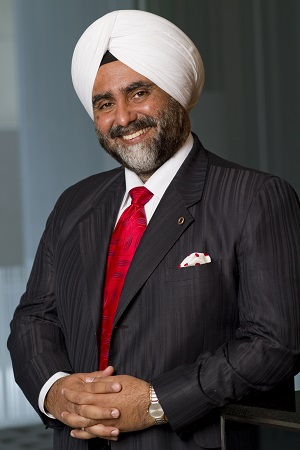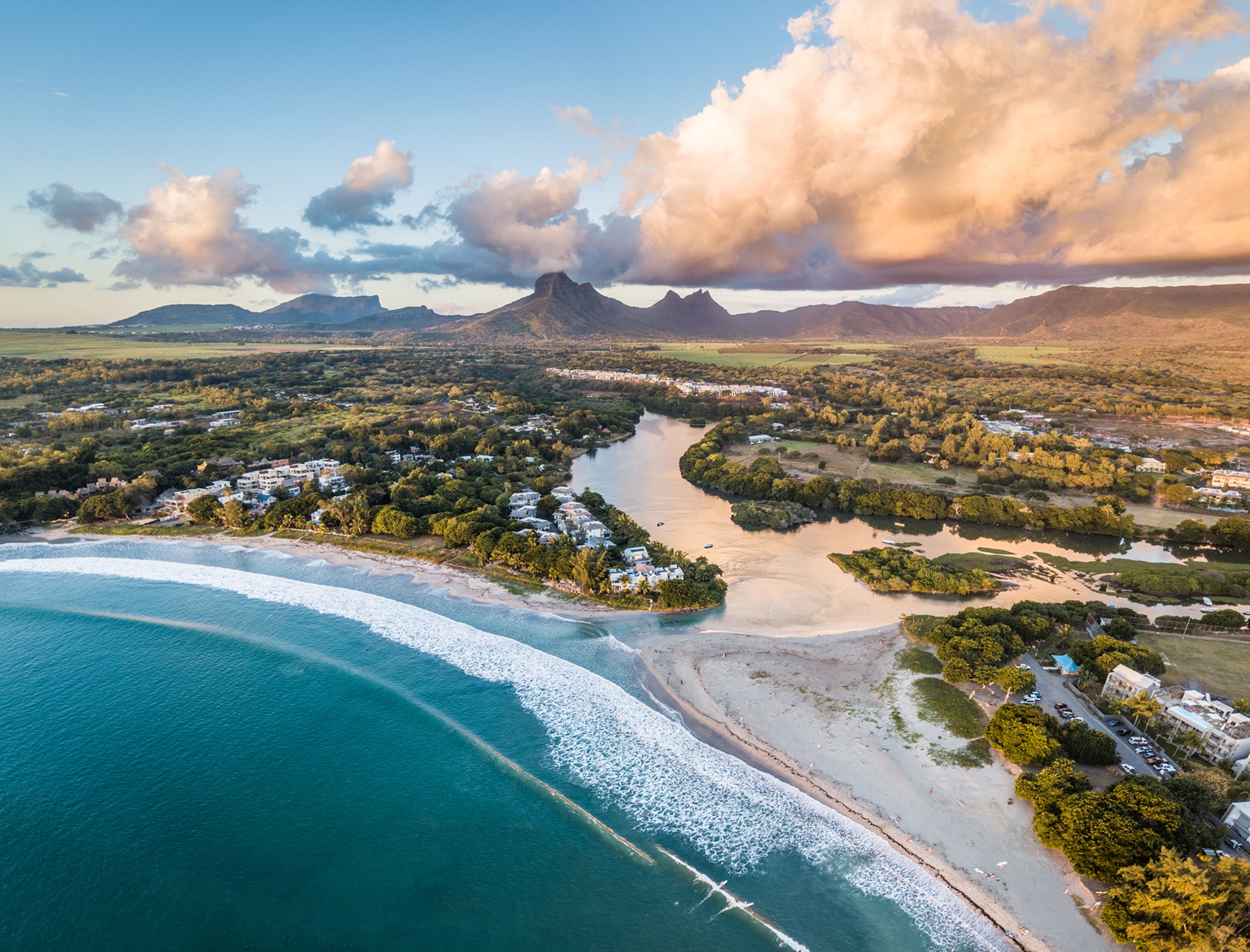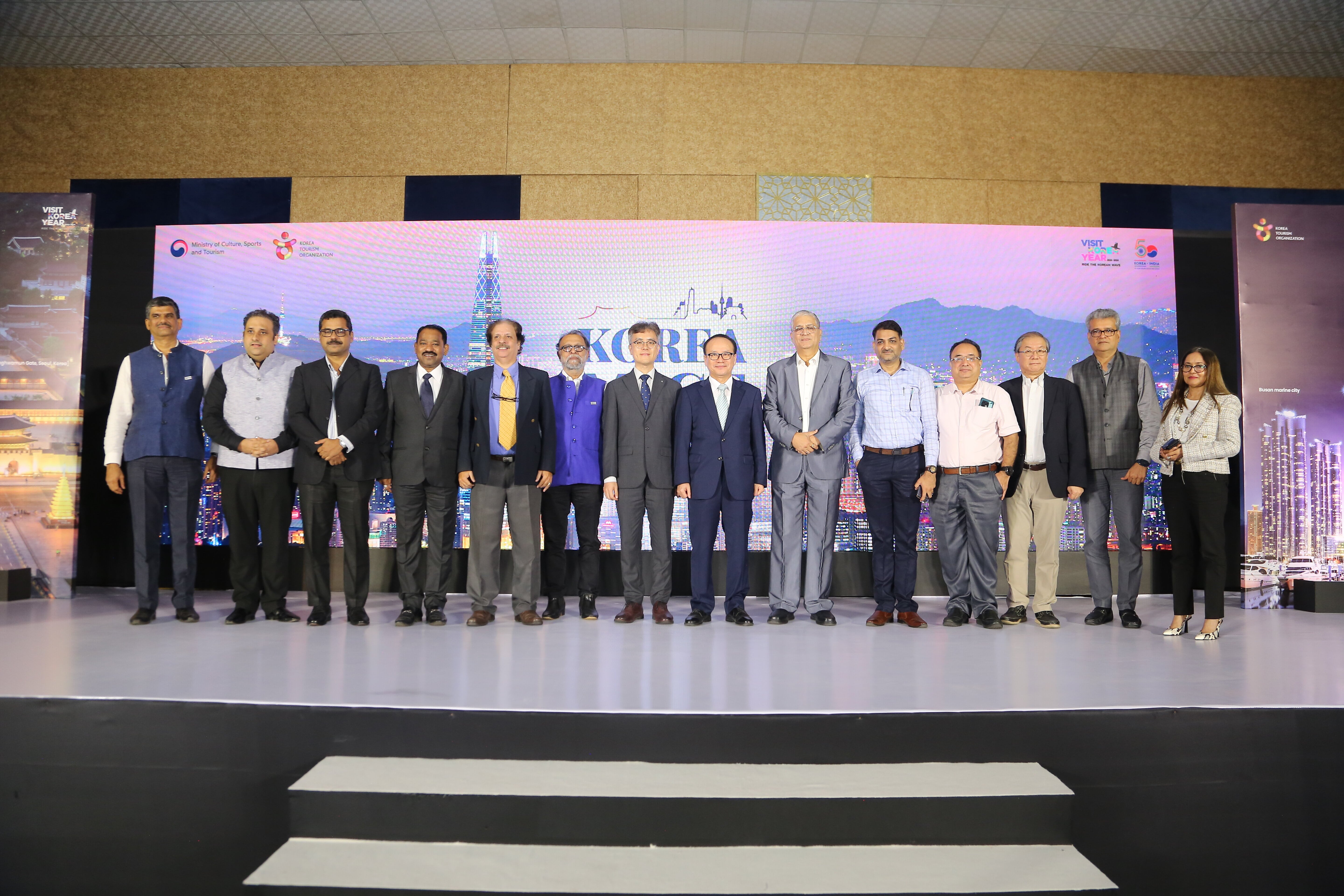As 2023 draws to close, regional HVS leaders across the globe take a look back at how the global hotel industry fared this year and opine on the outlook for next year.

While the U.S. experienced muted 2023 RevPAR growth relative to 2022 gains, most other global markets recorded extraordinary RevPAR growth, well above 10%, primarily fueled by strong ADR gains. While transaction activity cooled across the Americas and Europe, the Asia Pacific saw a significant strengthening as this region’s markets moved beyond pandemic-era restrictions.
India
By Mandeep Lamba, President – of South Asia, HVS Anarock and Dipti Mohan, Associate Vice President and Head of Research – HVS South Asia
In 2023, India continued its ascent on the global stage, building on its status as the world’s fifth-largest economy which was achieved the previous year. The country seized the spotlight, surpassing China as the most populous country, hosting over 200 meetings during its G20 presidency, and achieving a historic milestone by successfully landing Chandrayaan-3 on the moon’s unexplored south pole, the first country ever to do so.
Moreover, fueled by favourable demographics, robust domestic demand, and increased investments, India’s economic resilience persisted amidst global challenges. These factors positively influenced the tourism and hospitality sectors, with the nationwide hotel occupancy rate breaching 70% in February, a first since the pandemic. Despite a gradual decline in “revenge travel,” leisure demand remained strong, with even inbound tourism showing promising signs of recovery.

Simultaneously, the MICE and corporate travel segments have been rebounding, even in the face of the hybrid work culture, the popularity of online meetings, and higher airfares. As a result, HVS estimates the Indian hotel industry to conclude the year with an occupancy rate of 63–65%, marking a five-percentage-point increase from 2022, and average rates ranging from INR 7,200 to INR 7,400, reflecting a year-over-year increase of 20%. This will result in a RevPAR of INR 4,600–4,800, indicating a substantial 30% growth from the previous year.
Looking ahead to 2024, HVS anticipate sustained accelerated growth in the Indian hotel industry, despite ongoing global headwinds and the upcoming general elections. Growth in niche tourism segments, including religious and spiritual tourism, cruise tourism, and medical tourism, coupled with the government’s renewed commitment to the industry and sustained focus on infrastructure development, augur well for the sector’s enduring growth. Moreover, state-of-the-art convention centres such as Bharat Mandapam, Jio World Convention Centre, and Yashobhoomi Convention Center are expected to enhance India’s standing in the global MICE tourism market. As a result, HVS expects the nationwide hotel occupancy rate to reach pre-pandemic levels of 66% in 2024, with average rates anticipated to be near INR 8,000 (32–34% above the pre-pandemic level) for the year.
United States
By Rod Clough, President HVS – Americas
As 2023 ends, HVS look back on a year where hotel performance held steady, with occupancy closing out the year near 63% (vs. 66% in 2019) and ADR rising just under 5% to roughly USD 155. Group room nights continued to show substantial growth, helping fill the gap left by some pullback in the domestic leisure segment. While hotel operations were going strong, a different story played out in the transactions market, as the sector experienced a low not seen since 2020. The federal funds rate started 2022 at less than 1% and, by late summer of 2023, topped out at 5.25% to 5.5%; moreover, bank failures early in the year sent shockwaves through the investment community. These factors not only cooled the transactions market but sent an Arctic blast through it. As a result, transaction volume during the year declined by roughly 35% from 2022 levels.
Looking forward to 2024, HVS expects the year to have a slow start but then gradually accelerate, ultimately landing with a much stronger finish. The U.S. may avoid a recession, with very slow growth in the first two quarters followed by more significant economic growth in the third and fourth. HVS expect RevPAR to increase in 2024, albeit at a lower rate than that experienced in 2023. HVS may see a rate cut by the Fed by the summer if the anaemic economic growth pattern predicted by many economists takes hold in the first half of the year. The cut may help fuel an additional layer of transaction activity in the hotel industry and other real estate sectors.

More sellers are likely to bring hotels to market in 2024 as debt maturities are reached, PIP delays are exhausted, unavoidable defaults occur, or, conversely, successful post-pandemic business plans are completed. In the case of the latter, owners may become ready to sell high-cash-flowing hotels to move onto other opportunities at this point in the cycle.
Now is certainly the time to buy. With fewer buyers in the market and financing more difficult to come by, hotels are receiving fewer offers. This less-frenzied environment leads to more normalcy in transacting and a higher likelihood that parties can get to a successful closing that not only satisfies the seller but also leaves the buyer in a position to implement a business plan for real value growth. The cost of debt may be high and may require heightened due diligence, but a refinance down the road coupled with an eventual sale after the implementation of that business plan (selling at a time when the cost of debt will likely be lower than today) would likely lead to very favourable returns. HVS expect a more active year of transactions ahead and a relatively stable hotel operating environment.
Caribbean
By Kristina D’Amico, Managing Director, HVS – Caribbean Region
In 2023, the Caribbean has reached an all-time high in the major hotel performance metrics: occupancy, ADR, and RevPAR. RevPAR for most islands experienced double-digit growth when compared to 2019, driven by exponential ADR growth. Air passengers and cruise arrivals are on pace to exceed 2019 levels. While the majority of travellers are still visiting the Dominican Republic, Jamaica, Puerto Rico, and the Bahamas, an increase of airlift and new airlines in the region have allowed for more visitation to some of the smaller islands. In addition to the record performance metrics, there is less demand seasonality than ever before, with previously off-season months now displaying higher than typical occupancy levels. The region also benefited from minimal hurricane disruption during 2023, positively affecting the annual performance.

Going forward, despite the record performance metrics and visitation from both air and sea that will be achieved in 2023, the region still has its challenges to work through. Interest in new hotel and resort developments is prevalent as demand continues to outpace supply; however, developers are facing a challenging financing environment to get new projects off the ground and are having to be more creative with their capital stack. In addition, increased insurance costs have proven to be challenging for new development. However, despite these ongoing issues, the Caribbean continues to shine as new air routes continue to be added to the region and cruise ships continue to add new ports of entry. The outlook is favourable for additional ADR and demands growth in 2024, barring any natural disasters
Canada
By Carrie Russell, Senior Managing Partner – Vancouver, and Monique Rosszell, Senior Managing Partner – Toronto and Montreal
The year 2023 has set new benchmarks for the Canadian hotel industry. After reaching a RevPAR peak in 2022, the market RevPAR is on pace to grow another 15% in 2023, driven by strong growth in both occupancy and ADR. The leisure segment noted the benefit of increased trans-border and international visitation, while the domestic market continues to provide a key base of demand. The major metropolitan areas, including Toronto, Montreal, and Vancouver, also drove a large portion of the gains in 2023 as a result of strong meeting and group demand, much of it pent up from prior-year cancellations.
These major markets are also seeing an improvement in commercial/corporate demand, especially in the fall. While demand is not back to historical highs, the return of key corporate accounts is beneficial, as a decline in the domestic leisure market is possible given the softening economic conditions and expectation of a recession. Supply growth in Canada has been muted throughout COVID with soaring construction costs. A conservative lending environment and higher interest rates also helped suppress the pace of new development.
Transaction activity was strong in the first half of 2023, with some notable full-service trades in Toronto and Montreal; however, the pace of activity slowed in Q3. HVS expects that overall transaction volume will be CAD 1.5 billion for the year, which is slightly below 2022 and the forecasted CAD 2.0 billion in trades.
The outlook for 2024 is cautious. Economic forecasts for the country indicate minimal GDP growth, with an anticipated slowdown in the first half of the year. Inflation is expected to fall back to the target level of 2.5%, and while the interest rate outlook is still uncertain, interest rate hikes appear to have peaked. The interest rate has the potential to decrease modestly beginning in the late spring or early summer. This cloudy economic picture is likely to dampen the domestic leisure travel that has been a large contributor to the strength of the hotel industry in recent years.
That said, growth is still anticipated in the inbound international travel segment. Meeting and group demand is stabilizing, with modest growth anticipated, while the commercial segment is expected to see an uptick given that it has not recovered to the same degree as other segments. As a result, HVS expects RevPAR growth in the range of 2.0% to 4.0%. Supply growth is expected to track at a similar pace to 2023. With the record-setting RevPAR figures in recent years, the tightening of short-term rental restrictions, and the anticipation of interest rate declines, the pipeline for development is expanding. On the transaction side, several larger deals are expected to close early in 2024, which should result in a comparable volume to 2022 and 2023.
Mexico
By Richard Katzman, Senior Managing Partner – LATAM, and Lorea Arnoldi, Vice President
Mexico’s lodging industry combines robust business and leisure-oriented sectors, along with extensive international and national brand footprints. Indeed, additional brands continue to express interest in growing their pipelines across the country both in resort and urban destinations. Mexico’s economy and hotel industry are structurally and fundamentally sound. However, the 2023 macroeconomic environment faced complex challenges, including high inflation and interest rates, currency fluctuations against the U.S. dollar, and, in certain regions, security concerns. During 2024, presidential and local elections will add another layer of uncertainty.
During the last three decades, the country has experienced a transition from heavy dependency on oil exports to a focus on export manufacturing. Foreign trade has been the underpinning of Mexico’s economic stability in today’s USMCA era (post-NAFTA). In a post-pandemic environment, after the recurring tension of China–U.S. relations, nearshoring opportunities have been a motor for economic growth in states near the U.S. border and in central Mexico. Hotels in industrial cities have been able to increase occupancy and push average rates, with some evaluating PIPs.
However, the anticipated favourable impact of demand growth associated with nearshoring is still in its early stages, and the development pipeline in these cities remains limited. A more gradual recovery has been observed in major cities such as Mexico City, Guadalajara, and Monterrey. Demand in 2023 is below the 2019 level; however, the average rate has experienced a healthy recovery. Business and group demand both continue to grow; however, the leisure segment has experienced the greatest increase, particularly in Mexico City. The outlook remains favourable given the macroeconomic environment, tempered to some degree by 2024 electoral influences.
Mexican resort destinations such as Cancun-Riviera Maya, Los Cabos, and Puerto Vallarta-Riviera Nayarit have experienced strong occupancy and average rate increases in the past years, a trend that surged during the COVID-19 pandemic. However, demand and rate growth slowed during the summer of 2023. Smaller up-and-coming resort destinations have also benefited from this demand growth, and some will continue to evolve toward consolidation in the years to come, including La Paz, Mazatlán, and the Huatulco-Puerto Escondido corridor.
Over the past 15 years, Mexico’s resort industry allowed for steady growth both in the variety of products developed (including traditional European plans and all-inclusive hotels) and in demand levels that have accompanied this market expansion. The industry remains well positioned for future positive performance across locations and market segments, including resort residential. Still, challenges persist in some markets, such as the need for more thorough regional planning, infrastructure improvements, zoning, tourism promotion, and security.
South America
By Richard Katzman, Senior Managing Partner – LATAM, and Fernanda L’Hopital, Vice President
After several economic and political disruptions, South American hotel markets began a period of recovery in 2022 that strengthened in 2023. The main drivers included the return of meeting and group travel (surpassing levels achieved in 2019 in several cases), the increase in commercial demand (although remaining below the 2019 levels in most of the markets), and the return of international travel. In markets like Buenos Aires and São Paulo, stronger demand allowed for average daily rate increases in 2023. Other markets, like Lima, Santiago, and Bogotá, that experienced significant growth in supply in recent years also managed to increase their occupancy and rates, but at a more moderate pace.
Leisure destinations achieved sound occupancy levels, mainly driven by the return of international travellers and robust domestic and regional demand, which has been favoured by currency devaluations in many countries. Across South America, the investment climate remains challenging, with high inflation, limited debt, and a small pool of investors. As such, increases in inventory and the project pipeline have been limited since the start of the COVID-19 pandemic. More recently, local and regional development groups have begun to review potential opportunities.

For 2024, the outlook for the larger economies in the region is generally favourable, except for Argentina. Considerable uncertainty is anticipated for this country following a prolonged economic crisis and the recent presidential election that is expected to bring considerable change. In general, economic growth is projected for the region, together with decreases in inflation and interest rates. Local currencies are expected to remain relatively stable. This improvement in economic and investment conditions, together with solid hotel performance results, is anticipated to support a more active development pipeline.
Significant potential remains in the Brazil, Colombia, northern Peru, and Ecuador resort markets, where there are ample opportunities for leisure-oriented developments, from standalone European plans and all-inclusive properties to master-planned developments. Leisure-oriented products associated with natural resources, wellness, lifestyle, and culture also represent an attractive opportunity. Regarding business travel, there are select opportunities for hotel brands to increase their footprints. Countries like Brazil, Argentina, Colombia, Chile, and Peru have several secondary and tertiary cities that are underserved by quality hotel supply. Countries like Ecuador, Uruguay, Bolivia, and Paraguay also present development opportunities on a select basis.
Northern Europe
By Charles Human, President – Europe, and Sophie Perret, Managing Director
In 2023, continued strong RevPAR growth has been met with pressure on operating expenses and higher interest rates, with the latter particularly having a dampening effect on values and transaction activity. Through October, multiple markets (such as Paris, Rome, Brussels, Barcelona, and Bucharest) have seen more than 15% average rate growth this year compared to 2022, and even more markets have recorded more than 25% RevPAR growth.
The most growth occurred in Amsterdam, Brussels, Milan, Prague, and Rome. Elsewhere, average rate increases have already started to soften, and HVS anticipate only modest growth in 2024. Counterbalancing this trend, cost inflation is expected to ease, although utility prices may remain volatile given the current conflict in the Middle East.
Transaction volume across Europe so far this year has totalled around €11 billion, down more than 30% when compared to last year and over 60% when compared to 2019 levels. Most acquisition activity has been focused on Spain and other Southern European markets, and there have been noticeably fewer large portfolio deals. Real estate funds have been hoping to capitalize on situations where debt needs to be refinanced, but to date, any signs of distress or even material reductions in pricing are rare.
Interest rates are widely thought to have peaked, with the hope that cuts may commence during 2024. These reductions are, however, likely to be relatively small, and interest rates will remain above previous ultra-low levels for some time.
HVS expect transaction activity to pick up during 2024, partly as a result of an improving debt market, but also because there will be pressure to sell from owners facing difficulties refinancing over-leveraged situations and from multi-sector investors who are particularly exposed to the troubled office sector and need to create liquidity through hotel sales. A wave of distress is looking increasingly unlikely, however.
Southern Europe
By Ezio Poinelli, Senior Director – Southern Europe, and Demetris Spanos, Managing Director
Southern European countries have experienced a particularly positive year, with Spain, Greece, and Italy having almost recovered to tourist-arrival levels experienced pre-pandemic, while Portugal is already more than 10% higher. ADR increases have been robust and, in some cases, outstanding (especially in the upper segments of the market), with ADR increases for southern European countries’ submarkets ranging from 20–40% over 2019 levels. As a result, hotels enjoyed growing margins and profitability. For Italy in particular, labour costs have not increased in line with the high inflation rate the country is experiencing.
Hotels are considered a more dynamic commercial asset class given that they can more quickly adjust their operating metrics to match the economic cycle. As a result, investors in this region are particularly keen to invest in this sector at this time. On the other side, increasing interest rates and tighter loan parameters imposed by lenders have led to a lower number of transactions than in 2022. Alternative lenders and full-equity investors are now more active in the southern European market.
Institutional investors and sovereign wealth funds continue to look at South Europe and the Mediterranean as safe and promising places to invest, undertaking meaningful transactions of portfolios in Spain, luxury assets in Italy, and resorts in Greece. Noteworthy transactions include
ADIA’s €1-billion hotel joint venture with Melia; GIC’s investment in a 35% stake in the HIP/Blackstone platform of resorts in the Mediterranean, following the acquisition of a 51% stake in Sani/IKOS resorts in 2022; PIF Saudi Arabia’s 49% investment in Rocco Forte’s hotel group; and Palace Hotels & Resorts’ 100% takeover of Baglioni Hotels & Resorts, among others. Moreover, brand penetration continues to grow, with branded hotel keys representing more than 60% of total supply in Spain, 50% in Portugal, 24% in Greece, and 18% in Italy.
The outlook for 2024 remains positive. Southern Europe is looking forward to the gradual return of the Chinese market, and U.S. demand appears to be solid and has replaced demand from Russia in many destinations. Thus, inbound demand is expected to grow, especially for resort destinations, while domestic demand could potentially face some issues. According to HVS Business travel will probably continue to a full recovery, while the segment may experience a slight ADR correction in some destinations.
Repositioning or conversions of existing assets will continue, as they are less affected by the challenging lending environment and increasing construction costs. New (greenfield) developments are expected mainly in countries like Portugal, the Balkans, and the Greek islands, where governments have implemented favourable measures for sustainable development. Conversely, repositioning and conversions will characterize the markets with higher barriers to entry and greater bureaucracy, like Italy, along with more mature markets, like Spain.
Refinancing needs, capital expenditure requirements due to the EU’s ESG policies, and generational changes could push some owners in markets largely dominated by family ownership to sell their assets, creating interesting opportunities for new investors. The gap between asking and bidding prices is also expected to gradually reduce.
Africa
By Hala Matar Choufany, President – HVS Middle East, Africa, and South Asia
As of September 2023, Africa’s hotel performance reveals a blend of positive growth and challenges, with diverse key performance indicators (KPIs) underscoring the dynamic nature of the hospitality industry on the continent. During the year, different regions in Africa exhibited varied trends in hotel performance. Highlighting regional disparities, some areas experienced significant growth and increased international arrivals, while others encountered ongoing challenges. Notably, popular destinations like Addis Ababa, Kigali, Cape Town, Nairobi, Lagos, and Sharm El Sheikh surpassed 2019 occupancy levels, signalling full recovery and sustained interest in accommodations.
The year-to-date (YTD) September 2023 consolidated occupancy for Africa reached 55%, compared to 57% for the same period in 2019. On the other hand, the YTD average rate for the continent improved by 35% from 2019 levels, reaching USD 139. Morocco, Mauritius, Dakar, and Kampala boast higher rates than most cities, excluding the Seychelles, which commands a strong average rate. Additionally, certain emerging markets within Africa, such as Rwanda, Nairobi, and Morocco, exhibit promising growth in both hotel development and tourism-related activities.
Middle East

By Hala Matar Choufany, President – HVS Middle East, Africa, and South Asia
In 2023, the Middle East (especially the GCC countries) has shown robust growth in tourism and hotel performance, surpassing 2019 occupancy levels. The region leads in average rates, marking a 35% increase in YTD in September 2023 compared to the same period in 2019. All cities in UAE and KSA as well as Muscat have experienced significant growth in accommodated room nights throughout 2023, supported by strong air connectivity and substantial government and private investments in the hospitality sector. Despite challenges like rising construction costs and higher interest rates, the UAE and KSA continue to prioritize tourism as a fundamental contributor to economic growth. The positive tourism indicators affirm the sustained expansion.
The UAE currently operates around 208,000 hotel rooms at a 70% occupancy rate, with plans to add 45,000 more rooms, suggesting an increase of 10 million accommodated room nights. In Saudi Arabia, substantial investment in tourism resulted in strong growth in 2022, with solid figures continuing through September 2023. However, the hotel development pipeline, comprising around 350 hotels (150,000 rooms), may face delays due to increased construction costs and higher interest rates. Doha and Kuwait are expected to grow the most slowly, while other markets in KSA and UAE are anticipated to benefit from rising demand, albeit with slower average rate growth.
Asia Pacific
By Hok Yean Chee, President – Asia Pacific
Overall hotel performance across the Asia Pacific markets has continued recovery in 2023, as most markets removed the last of their health and travel protocols in the first half of the year. This includes the much-anticipated end of travel restrictions for China, such as the removal of quarantine requirements, the resumption of outbound group travel to various countries and the issuing of foreign tourist visas, and the removal of pre-departure COVID-19 antigen test requirements. Most markets experienced a full recovery of domestic travel, followed by international travel. This trend was reflected by the strong growth in Chinese outbound international flight bookings during the national public holidays in Q2 and Q3. The top five markets for growth in hotel performance were Beijing, Taipei, Shanghai, Bali, and Tokyo, while Maldives and Langkawi were more static markets. Looking forward to 2024, hotel performance in Asia Pacific is expected to improve.
In 2022, transaction activity in the Asia Pacific remained steady, with a 4% increase in transaction volume, reaching approximately USD 13.3 billion in hospitality assets sold. While some larger markets may have experienced slower transaction volumes in the past fiscal year, most notably South Korea and China, other markets are making gains, including Australia and Japan. In particular, Japan’s transaction volumes doubled in the last four quarters as compared to the preceding period, registering an increase of USD 909 million. Both countries registered increases in the past fiscal year (3Q 2022 to 2Q 2023) in transactions of over USD 1 billion. The recovery of the Asia Pacific hotel industry has been encouraging in 2023, but investors are still very cautious, citing high-interest rates, lingering inflation, and uncertainty in the global economy.
The general sentiment for the Asia Pacific hotel markets in 2024 is one of caution, with demand levels expected to be similar to 2023 levels and ADRs anticipated to grow slowly. This outlook is dependent on the rebound of flights to pre-pandemic levels and construction activity progressing, with loans being more readily available.
Read more: Statistics








